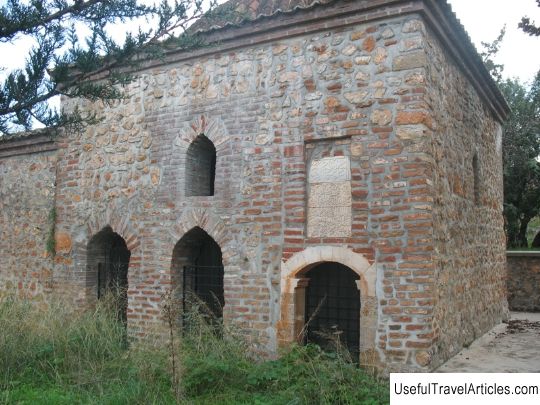Tomb of Askebe Turbesi (Akbese Sultan Mescidi) description and photo - Turkey: Alanya
Rating: 8,7/10 (7906 votes) 
Tomb of Askebe Turbesi (Akbese Sultan Mescidi) description and photos - Turkey: Alanya. Detailed information about the attraction. Description, photographs and a map showing the nearest significant objects. The title in English is Akbese Sultan Mescidi. Photo and descriptionThe burial complex of Sultan Askebe Turbesi is located inside the Alanya fortress, a hundred meters from the Suleymaniye Mosque. It was erected in 1230 by order of Askebe Turbesi - the first head of the fortress under Sultan Aladdin Keykubat I. The complex was made of stone, and the dome and inner walls were covered with bricks. The building, which has the shape of a square, consisted of two rooms - directly the tomb of Sultan Askebe Turbesi and mesjit. The tomb contains a long tomb. There are also three other tombs. Most likely, the apse of the mesjit was previously covered with faience. It has an image with an inscription that says: `` Only the Most High knows the conquerors of heaven and earth. Houses for praying to Allah are built only by those who truly believes in Him and in the coming of the loan day. The building was built in 1230, during the reign of the great sultan Aladdin, who needed the favor of Allah, and his poor slave Askebe. '' On a pedestal, a few meters from the mesjit, there is a cylindrical minaret made of bricks. Only a part of the minaret to the balcony has reached the present time. Three additional ancient tombs are carved into the rock on which the tomb is located, each of them two meters long. From the sources that have come down to us, it is known that they were used in later periods as reservoirs for water. A peculiar symbol of the complex is the ashtrays placed in the salons and in the garden. These vessels are mostly local products, spread in the Cilician region. They were made of limestone and associated with a funeral ceremony. Understanding perfectly well how difficult it is to make a grave in a rocky area, the locals were forced to burn the bodies of the dead, and place the ashes in special vessels made of limestone, which was very abundant in the area. They say they believed that the burning of the deceased was supposed to bring his loved ones immortality and at the same time testified to respect for the deceased. The vessels were made of various sizes and belonged mostly to the Roman and Byzantine periods. The vessels are shaped like a sarcophagus, and the lid is like a saddle.     We also recommend reading Agung Rai Museum of Art description and photos - Indonesia: Ubud (Bali) Topic: Tomb of Askebe Turbesi (Akbese Sultan Mescidi) description and photo - Turkey: Alanya. |




